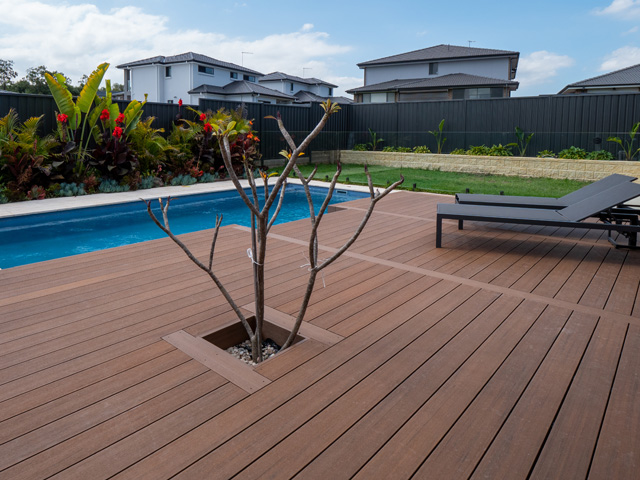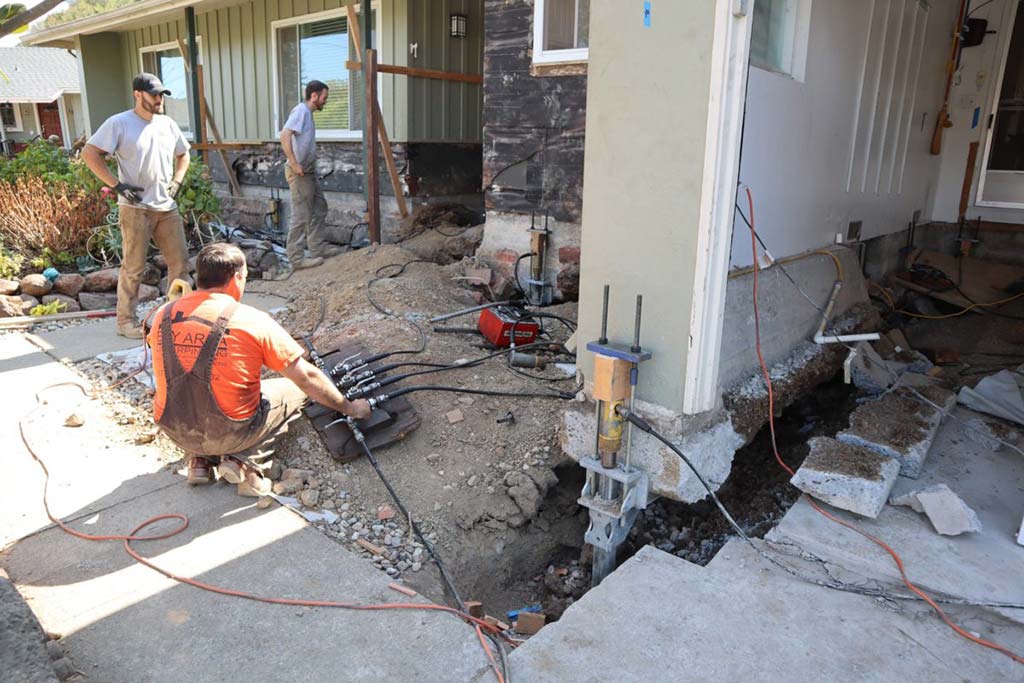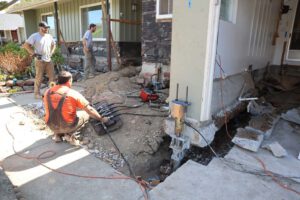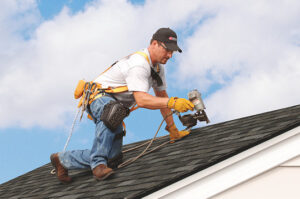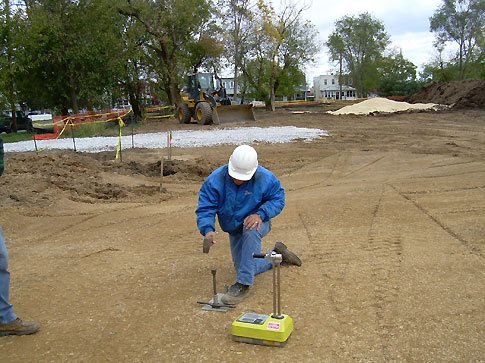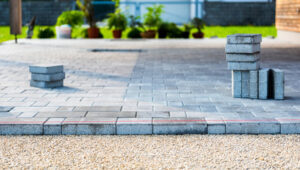A concrete patio is a beautiful way to update your backyard and add value to your home. It’s also durable and easier to maintain than a wood deck. It’s invulnerable to termite infestation and splintering, and it doesn’t require periodic staining.

When building a concrete patio, make sure to use a good mix of sand and aggregate stone. A concrete contractor can help you select a mix that is right for your project.
A concrete patio is a great way to add an outdoor dining area or entertainment space to your home. It can also enhance the beauty of your garden and is easy to maintain. You can choose from a wide range of designs and colors. A concrete patio is also versatile and can be designed to suit your backyard.
The cost of a concrete patio depends on several factors, including where you live and the size of the project. You can get a rough idea of the price by dividing the total cost by the square footage of the patio. However, this figure is only a starting point. You should consider the amount of labor, materials, and excavation involved in the project.
Concrete patios offer many design possibilities, from simple 10 foot by 10 foot slabs suitable for a picnic table to elaborate spaces that include an outdoor kitchen and dining area. You can also add a fire pit and other accessories to the concrete patio to improve the ambiance of your yard.
One of the biggest benefits of a concrete patio is that it can be stained any color, so you can match it to your home or landscape. A backyard concrete patio is also durable and can stand up to the elements. It is also low-maintenance, as weeds and grass cannot grow through it.
The durability of a concrete patio also makes it an excellent choice for homeowners who have pets or children. A concrete patio can withstand heavy foot traffic, and it is easy to clean. It can also be sealed to protect it from stains and fading.
If you want to add a decorative touch to your concrete patio, you can use various types of stamps and molds. These can make the concrete look like stone, tile, or even wood. Stamped concrete is more expensive than plain concrete, but it can give your backyard a premium look.
In addition to the cost of your concrete patio, you should also consider the cost of maintaining it. You will need to pressure wash it regularly and reseal it every 2–3 years. If you don’t do these things, your concrete patio can become unsightly and slippery. In addition, it may require regular repairs, such as removing cracks and resetting it to the correct level. You should also check your homeowner’s insurance policy to see if your new patio is covered in the event of a natural disaster.
Maintenance
A concrete patio is a great way to add value to your home while enjoying the comforts of outdoor living. However, like all exterior concrete surfaces, it needs regular maintenance to keep its appearance and durability in good condition. A properly maintained patio should last decades without any significant damage. It’s important to clean a concrete patio regularly and to apply sealers (about every two or three years) to deter stains and prevent cracking.
The first step in cleaning your concrete patio is to remove all furniture, grills, plants, and toys from the area. This allows you to access the entire surface and scrub stains more thoroughly. Use a degreaser made for concrete and follow the manufacturer’s instructions. If the stain is particularly stubborn, try using a steel wool brush to get at the bottom of the stain and remove any underlying oil.
Vinegar and baking soda are natural cleaners that work well to remove rust stains from a concrete patio. Pour the cleaner onto a rust stain and scrub with a brush. Be sure to wear rubber gloves and eye protection when applying the cleaner. After scrubbing, rinse the patio with clean water.
A simple garden hose can be used to hose down your patio to remove dirt, debris, and other loose particles. This should be done before a major cleaning, such as in the spring or fall. Be sure to sweep the patio before hosing it down to ensure that all dirt and debris are removed from the surface.
Regularly sweeping your concrete patio will help prevent moisture from getting into the pores of the concrete and causing cracks and flaking. Moisture trapped in the concrete during the winter can also cause freezing and thawing, which can compromise the durability of the concrete.
It is a good idea to install a gutter system to direct the runoff from your patio away from the structure instead of towards it. This will reduce the amount of salt you need to use during the winter and protect your concrete patio from corrosive deicing products.
Durability
Concrete is a tough material that holds up well to heavy use. However, it’s important to keep in mind that all materials will eventually wear out with age. Proper maintenance can delay this process, but the life of a concrete patio depends on its location and its exposure to the elements.
If your backyard is in an area prone to storms, it’s best to cover the patio to protect it from heavy rainfall. You should also avoid placing plants or bushes directly on the patio because their roots may push up the concrete and cause it to crack.
Another way to ensure the longevity of your concrete patio is to install a retaining wall or planter beds to prevent soil erosion and flood damage. If the patio is in an exposed location, it’s best to use a protective fabric such as a canvas patio cover or pergola canopy. These covers can help shield the patio from harsh sunlight and keep occupants cool and comfortable.
The durability of your concrete patio will depend on several factors, including the thickness and reinforcement of the slab. Concrete contractors carefully plan joints in the slab to reduce the likelihood of cracking. If the patio is located in a flood zone, it’s usually best to use steel reinforcing bars rather than wire mesh for added strength.
In addition to reinforcing the slab, it’s a good idea to seal your patio after it’s poured to protect it from oil contaminants and normal wear and tear. Certain chemicals, such as deicing salts, can corrode the concrete and remove its sheen, so it’s important to read the warnings on all products before using them on your patio.
When it comes to choosing the right material for a new patio, many homeowners choose concrete over pavers due to its cost-effectiveness and versatility. Concrete is also easier to maintain than pavers, which often require sand-filled gaps between individual units where grass and weeds can sprout. Moreover, a professionally poured concrete slab won’t shift over time and give way to dirt and vegetation like pavers do.
Design
A concrete patio can add value to your home and be a great place for entertaining. It is also durable, so it can withstand heavy use and last for years. A reputable professional can provide you with a detailed design that suits your needs and budget. Before hiring a contractor, make sure to check the building codes and zoning laws in your area. The local building department should have printed guidelines for you to read. This will help you avoid mistakes that can cause legal trouble later on. It is also important to note that the addition of a patio will increase your property taxes. This amount varies by town, so it is best to consult with your local tax assessor before starting work on your patio.
A major benefit of concrete is that it is customizable to match your backyard aesthetics and home design. There are many different finishing styles for concrete that can be used to mimic the look of brick, stone, tile, or wood. You can even add geometric designs or a blended pattern to the surface. Moreover, you can tint or dye the concrete to achieve any color you like.
In comparison, other patio materials have more limitations in terms of style and functionality. Wood patios rot or splinter, and stone patios are difficult to clean. In addition, these materials require consistent maintenance and resealing. Concrete, on the other hand, requires minimal maintenance and is easy to clean.
One downside to concrete is that it can be slippery when wet. If you live in a region with a lot of rain, you should consider adding aggregate to the mix or using a texturized finish to minimize this problem. Concrete can also crack over time. If you live in a region with extreme high or low temperatures, it is essential to check your concrete regularly for cracks and chips. If you notice any cracks, they should be repaired immediately to prevent them from spreading and becoming a safety hazard.
If you are planning to install a concrete patio, it is important to plan your project carefully and follow the construction steps. Once the concrete is poured, it should be left alone to settle for about 24 hours before placing any weight on it. This will ensure that the concrete sets properly and does not crack or chip.

